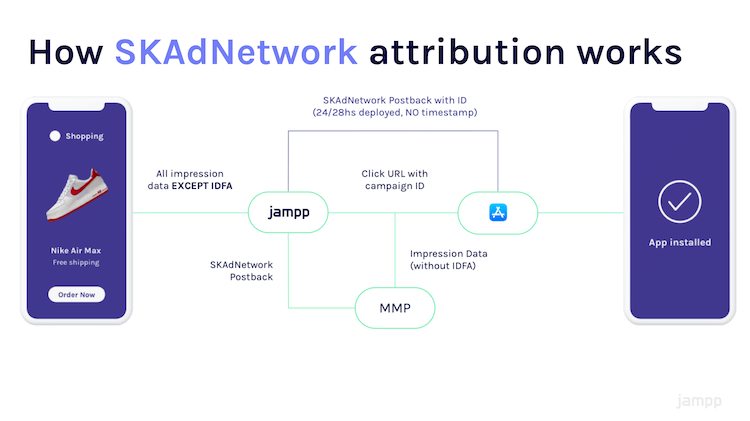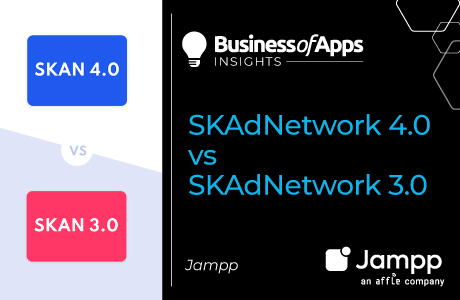Full disclosure: response rate was a little lower than other questionnaires we’ve done in the past, suggesting maybe that ignorance is bliss? Maybe advertisers didn’t want to know what they didn’t know. But we still got over 57 responses from advertisers across different verticals, so we figured we’d share the results.
There were 3 questions about SKAdNetwork that EVERYONE got wrong:
Question #1: SKAdNetwork allows marketers to track their campaigns and determine which ones led to installs or purchases with…
While there was a draw between the A and the D options, the answer is “aggregated campaign data, very limited down-funnel reporting, and no control over attribution windows.” This means we’ll know that a certain campaign gets an install (or an in-app conversion) but we won’t know which user made that install (or even which creatives were served). The latest documentation also stated that SKAdNetwork version 2.2 will include some form of view-through data.
Question #2: With SKAdNetwork the app can send in-app events and revenue data.
The most chosen answer was option A, but even if optimization will get more complicated, the correct answer is “Yes, but the app can only send one conversion-value per install and there may be a delay depending on how it’s implemented.”
Question #3: Which of the following are real requirements for getting your app ready for iOS 14 changes?
41% of respondents chose option C ⚠️, which included “registering as an ad network in SKAdNetwork”… don’t worry, advertisers, you can strike that one from the list, as only DSPs and ad networks need to do that. The correct answer is “Your app will need to implement the ATT and the SKAdNetwork frameworks. You also need to have the latest version of your MMP’s SDK and set up your conversion-value mapping to define how to track key conversions.”
There were also some mixed replies regarding the campaign ID and the SKAdNetwork postback…
The 50-50 split between right and wrong answers for these questions suggests it was left in the hands of fate (a.k.a most people guessed), so below we’ve added a few points of comparison between the beloved IDFA and the elusive, mythical creature that seems to be the SKAdNetwork postback🦄.
IDFA Attribution
Essentially, IDFA attribution means 1 to 1 matching and full granularity on campaign variables: creatives, placements, audiences, and more.
SKAdNetwork Attribution
Essentially, SKAdNetwork attribution means we cannot connect a specific install to a user; and, therefore, we cannot trace the impression that generated it, but only a group of impressions within a unique ID.
What would you have answered to these? Would you have got it right? Here are some other questions featured on the quiz:
- How many hours after an install will a DSP receive a postback from SKAdNetwork? What information will be in it?
- What is the conversion value and who defines it? Can it be changed?
- Will DSPs be able to offer granular reporting on the creative and publisher level of their campaigns? How?
- Can advertisers optimize for CPA with SKAdNetwork?
If you feel like you need to google… hit us up instead. One of our sales reps will kindly grab a virtual coffee and run through the basics to launch your first SKAdNetwork app marketing campaign!
















